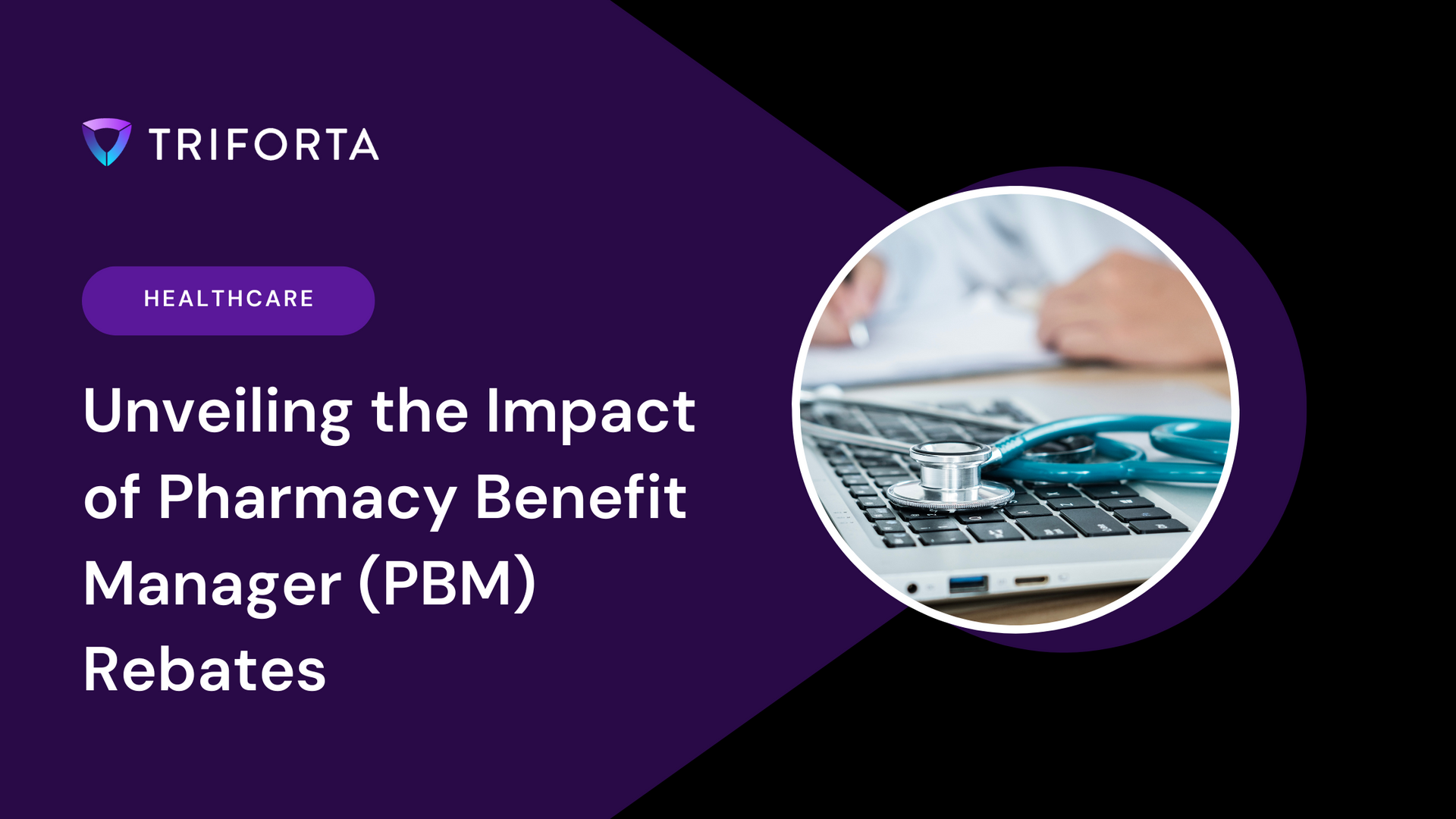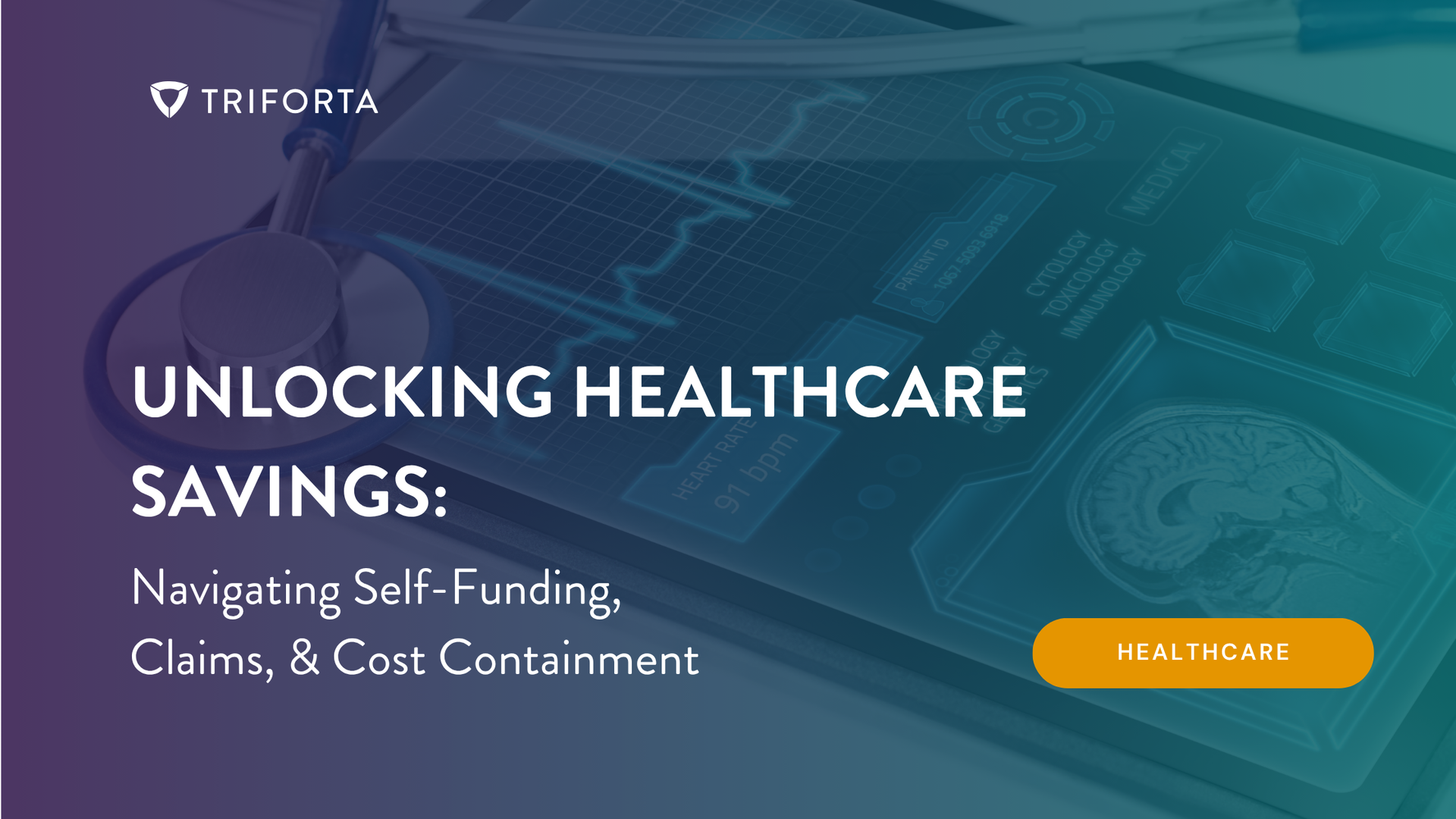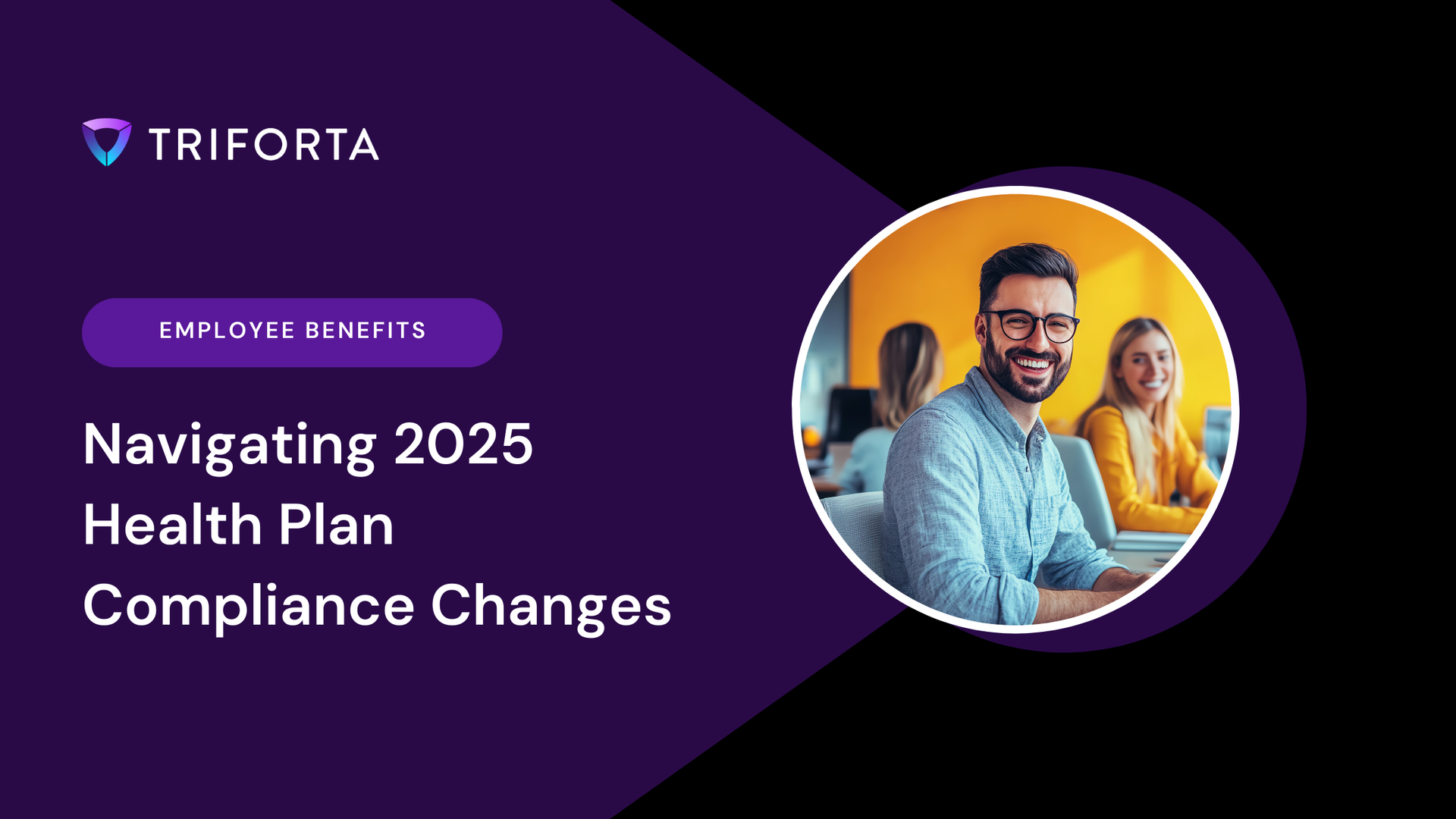Navigating 2025 Health Plan Compliance Changes
Health plan compliance is essential for managing employee benefits, and with evolving regulations, it can sometimes feel like navigating a maze. In this blog, we'll break down the latest changes coming in 2025 and explain what they mean for HR professionals and group health plan administrators. Decades of experience in the insurance industry remind us that proper compliance not only protects your company but also ensures that employee benefits—like health continuation coverage—remain aligned with federal regulations.
Key Developments in Health Plan Compliance for 2025
Looking ahead to 2025, several big changes are set to shape health plan compliance. Let’s dive into what’s coming and why these updates are important for your organization:
Simplified ACA Reporting
Thanks to the Paperwork Burden Reduction Act of 2024, ACA reporting is getting a much-needed update. Starting in 2025, applicable large employers (ALEs) will provide Forms 1095-C only upon request rather than automatically sending them out. This change eases the administrative load and cuts costs, but remember—employers still need to inform employees about their right to request the form and ensure those requests are processed within required timeframes.
This update not only reduces repetitive tasks but also encourages a more efficient, on-demand approach to compliance reporting. HR teams can reallocate time and resources to more strategic initiatives, ultimately benefiting both the organization and its employees.
New Mental Health Parity Requirements
The 2024 final rule under the Mental Health Parity and Addiction Equity Act (MHPAEA) is here to up the ante. It now requires fiduciary certification for comparing nonquantitative treatment limitations (NQTLs). In plain terms, employers must certify how they select qualified service providers for mental health and substance use disorder benefits, ensuring these benefits match up with medical/surgical services.
For organizations, this means instituting stricter oversight of mental health benefits and revising internal processes to align with these new standards. If the certification process isn’t handled correctly, penalties could follow. However, when done right, it enhances transparency and equity in how benefits are administered, ultimately leading to better outcomes for employees.
Expiration of Telemedicine Exception for HDHPs
The telemedicine exception that was introduced during COVID-19 for high-deductible health plans (HDHPs) expired at the end of 2024. Moving forward, HDHPs will need to include deductibles on telemedicine services (excluding preventive care) to maintain HSA eligibility. This change reinforces the need for clear communication with plan participants.
Employers must now ensure that employees understand these modifications. Detailed communication materials, such as FAQs and webinars, can help bridge the gap and answer any questions that might arise. Providing this extra layer of support not only builds trust but also mitigates the risk of confusion when these new rules take effect.
Navigating New Privacy Protections in Health Plan Compliance
Privacy protections have received a significant boost in recent developments. New HIPAA privacy rules for reproductive healthcare, effective December 23, 2024, are designed to safeguard patient care and privacy—especially crucial for those claiming retirement benefits.
These rules strictly control the use or disclosure of protected health information (PHI) related to reproductive healthcare. Employers must now be extra vigilant, updating HIPAA policies, training staff regularly, and reviewing business associate agreements. For companies that manage self-insured plans or handle sensitive PHI, these steps are non-negotiable. It’s about striking the right balance between compliance and providing comprehensive benefits.
Moreover, by integrating these enhanced privacy measures into your routine practices, your organization not only meets regulatory demands but also demonstrates a commitment to protecting employee data. This builds trust and reinforces your reputation as a responsible employer.
Transparency Requirements: A Continued Focus
Transparency in healthcare pricing and coverage remains a hot topic in 2025. Here’s what you need to know to stay ahead:
- Self-Service Price Comparison Tools: Health plans must now offer online tools that allow participants to compare pricing for covered services. This empowers individuals to make informed decisions based on cost and quality.
- Machine-Readable Files (MRFs): Detailed pricing information is required to be posted in MRFs, which must be updated monthly on a public website. This level of detail ensures that everyone has access to current and accurate data.
- Surprise Medical Billing Notices: These notices must be clearly available on public websites and include straightforward explanations of benefits, protecting consumers from unexpected costs.
- Prescription Drug Reporting: Health plans must report drug and healthcare spending to the federal government by June 1 each year. Special cases, like domestic partnerships, require particular attention. The association health plan rule offers additional clarifications to help navigate these requirements.
The purpose behind these transparency measures is to empower consumers while driving down healthcare costs. Although these changes add another layer of complexity, they ultimately lead to a more open and competitive market. Collaborating with your insurance carriers, third-party administrators (TPAs), or vendors is key to ensuring that your organization meets all these requirements without missing a beat.
Unsure how to maintain transparency compliance? Reach out to Triforta for expert guidance.
Transparency Requirements: A Continued Focus
Beyond the confirmed changes, keep an eye on these potential developments that could further impact health plan compliance:
● Enhanced Cybersecurity for Electronic PHI: Proposed updates to the HIPAA Security Rule may lead to more robust cybersecurity measures. With cyber threats constantly evolving, staying ahead of these updates is critical.
● Increased Oversight of Pharmacy Benefit Managers (PBMs): Additional state and federal oversight could change how PBMs operate, affecting your plan’s cost structure and compliance obligations.
● New State Coverage Mandates: Some states might introduce new mandates for fertility treatments in fully insured plans. Such changes could impact association health plan rules and require adjustments in your offerings.
● Ongoing Litigation: Legal challenges affecting ACA preventive care mandates and ERISA fiduciary requirements could have ripple effects on group health plans. Staying informed on these cases will help you anticipate and adapt to changes.
Keeping up with these potential developments will not only keep your organization compliant but also provide an opportunity to review and optimize your overall health benefits strategy.
Deep Dive: Best Practices for Staying Ahead
To navigate these complex changes, consider these best practices:
● Regular Training and Updates: Host quarterly training sessions for HR and benefits teams to ensure everyone understands the new regulations and internal processes.
● Proactive Communication: Keep employees informed through regular newsletters, webinars, and Q&A sessions about any changes affecting their benefits.
● Collaboration with Experts: Work closely with legal, compliance, and benefits experts to interpret the new rules and implement them effectively.
● Internal Audits: Conduct periodic internal audits to assess compliance, identify gaps, and adjust policies as needed.
● Leverage Technology: Utilize compliance management software to automate reporting and track changes in regulations. This can significantly reduce administrative burdens and enhance accuracy.
Implementing these practices will help streamline your compliance processes and create a culture that values transparency and proactive management.
FAQs about Health Plan Compliance
What is health plan compliance?
Health plan compliance involves following federal and state laws that govern employer-sponsored health plans, including the ACA, ERISA, and HIPAA. It ensures that plans meet legal standards while protecting the rights of participants, thereby building trust and safeguarding employee benefits.
What are the three main areas of healthcare compliance?
- Administrative Compliance: This includes documentation, reporting, and ensuring that all regulatory paperwork is up-to-date.
- Clinical Compliance: This ensures that the quality of medical services meets required standards, directly impacting patient care.
- Corporate Compliance: This encompasses ethical practices, legal adherence, and overall corporate governance related to healthcare benefits.
What are the 7 federal guidelines for compliance plans?
- Written policies and procedures.
- A designated compliance officer and committee.
- Effective training and education.
- Open communication channels.
- Internal monitoring and auditing.
- Disciplinary guidelines for enforcement.
- Corrective actions in response to any issues.
What 5 factors must a compliance plan include?
- Risk Assessment: Identify potential risks and vulnerabilities.
- Policies and Procedures: Develop comprehensive guidelines that reflect best practices.
- Training and Education: Ensure that all relevant parties are well-informed and up-to-date with new requirements.
- Monitoring and Auditing: Implement regular checks to ensure compliance is maintained.
- Response and Correction: Develop a robust plan for addressing any compliance issues swiftly.
Conclusion
Navigating health plan compliance in 2025 comes with its fair share of challenges and opportunities. While simplified ACA reporting offers administrative relief, new mental health parity requirements and enhanced privacy protections demand extra attention. Staying current with these evolving regulations is key to avoiding penalties and protecting employee benefits—from health continuation coverage to retirement benefits.
By embracing proactive communication, regular training, and leveraging the latest compliance technologies, you can transform these challenges into opportunities for growth. Partner with the right experts, and don’t shy away from revisiting your strategies to ensure they are both comprehensive and agile. With a commitment to transparency and continuous improvement, your organization can confidently navigate the complex landscape of health plan compliance in 2025.
Stay informed, stay compliant, and let’s make 2025 a successful year for your employee benefits programs!
Ready to simply compliance and strengthen your health plans?
Contact our team today for a personalized health plan compliance review . We’ll align our deep-rooted expertise and technology-first mindset to help you confidently meet the challenges of 2025.










